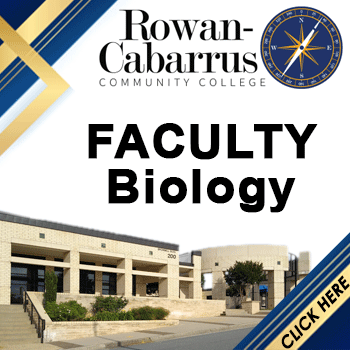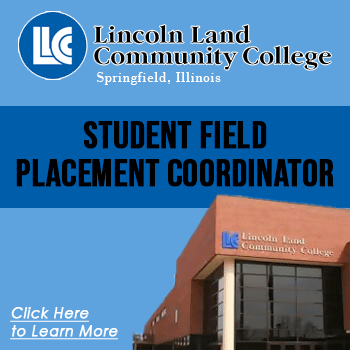This job has Expired
Assistant Professor
Job Description
Assistant Professor
Full Job Description
AULTMAN COLLEGE OF NURSING AND HEALTH SCIENCES
POSITION DESCRIPTION
POSITION TITLE(S): Assistant Professor
DATE: May 2019
DIVISION: Academics
REPORTS TO: Program Director and/or Division Dean
CLASSIFICATION: Faculty (ranked) SUPERVISES: Students & Adjunct Faculty (as delegated by the dean)
PRINCIPAL ACCOUNTABILITES (SUMMARY)
Primarily responsible for planning, implementing, and evaluating classroom, laboratory, and clinical instruction and academic advising of students at Aultman College of Nursing and Health Sciences. Participation in program development and evaluation is also required. Participation in College committees and activities as needed.
Teaching expectations are outlined in the faculty workload policy.
For more detail on principal accountabilities, see “Performance Measures and Standards” listed below.
POSITION REQUIREMENTS
GEN ED
- Minimum Master’s Degree with 18 graduate hours in the content area of instruction NRS
- Completion of an approved registered nursing education program;
- Current active licensure as a registered nurse in the State of Ohio;
- Experience for two years in the practice of nursing as a registered nurse;
- Certified Nurse Educator (CNE) preferred
- A minimum of a master’s degree in nursing with maintenance of expertise in area of responsibility. (ACEN Standard Faculty and Staff, 2.1 and CCNE faculty and staff standard)
A Master’s Degree; (Ohio Board of Nursing (OBN) Rules 4723-5-10 Qualifications of Administrative, Faculty, and Instructional Personnel for a Professional Nursing Education Program)
- If the individual does not possess a bachelor of science in nursing degree, the Master’s or other professional degree, including, but not limited to a Ph.D., shall be in nursing;
- If the individual possesses a bachelor of science in nursing degree, the Master’s degree may be, but is not required to be, in nursing. Previous teaching experience in a professional nursing education program is preferred. In this case, the individual is qualified for clinical instruction only.
RAD
- Minimum of a baccalaureate degree
- Unrestricted state license with the Ohio Department of Health (ODH)
- Holds American Registry of Radiologic Technologist (ARRT) certification and registration in radiography
- Documentation of two (2) years of clinical experience in the professional discipline (JRCERT 6.3, 3.8)
SOCIAL WORK
- Minimum of a master’s degree in social work obtained from a CSWE accredited institution.
- Current active license to practice social work in the State of Ohio.
- Experience of a minimum of two years or more in social work practice post master’s degree obtainment.
- Maintains expertise in areas of social work practice and shows performance that reflects on scholarship and evidenced based teaching practices.
MEDICAL ASSISTING
- Minimum of an associates degree; baccalaureate or masters preferred
- Must be current and competent in the MAERB Core Curriculum objectives included in assigned teaching, as evidence by education and/or experience.
- Credentialed and current in Medical Assisting by a National Accredited Credentialing Organization preferred. CMA (AAMA) preferred.
- Must have instruction in educational theory and techniques.
- 5 years’ experience in performing administrative and/or clinical procedures of medical assisting preferred.
- Experience with online learning platforms preferred.
REQUIRED KNOWLEDGE, SKILLS, AND ABILITIES
Demonstrated written, oral, and electronic communication skills, analytical skills; familiarity with the rules and regulations specific to the discipline being instructed, and ability to adapt rapidly to a variety of situations.
Knowledge of curriculum development, methods of teaching and evaluation is desired. Demonstration of research, scholarship, and commitment to community service is desired.
See Rank and Promotion Policy (Aultman College of Nursing and Health Sciences Faculty Handbook) for additional requirements, particularly in reference to potential for advancement in rank.
PERFORMANCE MEASURES & STANDARDS
- Effectively facilitate learning and learner development:
- Assess the individual learning styles/needs of diverse learners.
- Implement a variety of teaching strategies related to content, setting, course/program outcomes and learning styles/needs.
- Consider multicultural influences on teaching and learning.
- Practice skilled oral, written, and electronic communication.
- Model critical and reflective thinking practices for students.
- Show enthusiasm for teaching, learning, and nursing that inspires and motivates students.
- Possess personal attributes that facilitate learning (caring, confidence, patience, honesty, flexibility, and respect for students).
- Develop collegial working relationships with clinical agency personnel to promote positive learning environments for students.
- Serve as a role model of professional nursing in the practice setting.
- Develop action plans with students to assist with goal achievement.
- Provide academic advising to students
- Nursing faculty should additionally refer to” Faculty Responsibilities Related to
Supervision of Students” Policy for further descriptions and definitions. Those nursing
faculty teaching a nursing course shall specifically:
- Provide a syllabus or outline to each nursing student that includes at least:
- The title of the course;
- The number of theory hours, if applicable;
- The total number of clinical and lab hours combined if applicable and of this combined number:
The total number of planned clinical hours
The total number of planned laboratory hours
-
-
- The course description;
- The course objectives or outcomes;
- The teaching strategies, including the job title, credentials or other
-
information describing the background of an individual providing course
content, whose qualifications are directly related to the course;
-
-
- The methods of evaluation;
- The name of the faculty who will be teaching the course;
- The name of teaching assistants that will teach the course, or provide
-
instruction in laboratory or clinical settings, as directed by faculty; and
-
- The required textbooks and other bibliography of learning resources;
- Design and implement teaching strategies that will assist a nursing student to meet the course objectives or outcomes;
- Direct and supervise the activities of a teaching assistant and preceptor, if utilized;
- Evaluate each nursing student's achievement and progress with input from the
teaching assistant or preceptor, if utilized.
- At the conclusion of the course the faculty responsible for teaching the course shall compare planned clinical hours with delivered clinical hours and planned lab hours with hours delivered and report this data to the program director.A faculty member of a nursing education program is responsible for planning the student’s clinical experience and for evaluating the student’s performance. Clinical nursing experiences are assigned by faculty based on course objectives and student learning needs. Faculty shall supervise student practice by providing guidance, direction, and support appropriate to the clinical situation.
- Clinicals will have established objectives.
- Faculty will communicate these objectives to the student, teaching assistant, preceptor, and staff at clinical site.
- Faculty will ensure all students are oriented to the clinical setting.
- Make assignments in conjunctions with the teaching assistant or preceptor for the student’s experience consistent with course objectives.
- Faculty members providing clinical supervision of students must meet the qualifications of OAC 4723-5-10
- While supervising nursing students in the clinical setting, faculty function only as a faculty member during the nursing student’s clinical experience.
2. Use assessment and evaluation strategies:
- Match strategies to the desired learning outcomes for theory and clinical practice.
- Provide timely, constructive, and thoughtful feedback to learners.
- Use formative and summative evaluations to enhance the teaching-learning process.
- Demonstrate skill in test design, test construction, and item analysis.
- Supervise and evaluate student learning in the clinical, laboratory, and classroom environments.
3. Participate in Curriculum Design and Evaluation of Program Outcome:
- Apply sound educational principles, theory, and research to the implementation of the curriculum.
- Formulate outcomes for theory and clinical.
- Revise/reorganize course content based on assessment of program outcomes, learner needs, and current trends.
- Select textbooks, audiovisual materials, and other appropriate resources to facilitate learning.
- Consult with colleagues, Program Director, Dean, and others as necessary.
- Attend course and/or level meetings.
- Implement continuous quality improvement measures.
4. Develop the Educator Role:
- Seek out activities/opportunities that increase the effectiveness of the roles of the educator.
- Balance the teaching, scholarship and service demands inherent in the role of educator.
- Use feedback obtained from self, peer, student, and administrative evaluations to increase role effectiveness.
- Participate in professional development activities designed to promote the roles of teacher, scholar, and clinician.
- Mentor new faculty.
- Participate in community service activities.
- Maintain a professional portfolio.
5. Engage in Scholarship:
- Utilize evidence-based research/literature to improve teaching/learning.
- Share teaching and learning expertise with other faculty and professionals.
- Demonstrate qualities of a scholar (i.e. integrity, courage, perseverance, vitality and creativity)
6. Function as Change Agent and Leader:
- Develop leadership skills to shape and implement change.
- Orients course faculty, as applicable, to course components and responsibilities.
- Discuss the implementation and evaluation of creative teaching/learning activities with other faculty.
- Chair committees and/or task forces within the Division, College, or Aultman Health Foundation.
- Collaborate with the clinical site’s staff, peers in nursing, and all College divisions to meet students’ learning needs and objectives.
- Recognize problems related to students, staff, and faculty and seek appropriate resources.
7. Function within the Educational Environment:
- Actively support the College Mission and Values.
- Actively support the Division’s philosophy and goals.
- Attend College functions.
- Serve as a member of College committees and task forces as necessary.
- Attend sponsored educational programs.
- Treat all persons with compassion, care, courtesy and respect.
- Respect the privacy/dignity of others.
- Assist other faculty and staff as needed.
- Post and maintain a minimum of six (6) office hours per week.
- Respond in a timely fashion to student, staff and faculty requests.
- Communicate effectively and professionally (verbal, nonverbal, and electronic).
- Project a professional image in attire, appearance and behavior.
- Deal with difficult situations effectively.
- Perform as a team member.
- Understand data collection/reporting obligations.
- Report on time and share information with appropriate director/manager before submitting to IEC.
ROLE WITHIN THE CULTURE OF ASSESSMENT
Each administrator, staff, and faculty member is expected to understand, value, prioritize, and communicate assessment as a critical institutional practice. Everyone has a responsibility to support the culture of assessment with behaviors that facilitate and sustain practices. Position-specific responsibilities include:
- Understand data collection/reporting obligations
- Report on time and share information with appropriate director/ manager before submitting to IEC
PHYSICAL/MENTAL DEMAND AND WORK ENVIRONMENT
Working conditions in the office areas are good. Position requires regular attendance, much mental
activity, study, reading, planning, evaluating and decision making. If practicing duties related to clinical instruction (especially patient contact) hazards could include needle sticks and sharp instruments and bloody and bodily fluid exposure or any other hazard a health care worker might be exposed to in the normal performance of their duties. Physical demands in the office are minimal with occasional lifting and/or carrying of such articles as records, files, or books - 10 pounds maximum. Operation of standard office equipment such as phone, computer, and copier occurs on a
frequent basis.
Occasional irregular hours and travel (which may include clinical site visits).
Provide timely response to externally/internally imposed conditions and deadlines.
Location: Aultman Health Foundation · BACHELOR OF NURSING EXP
Schedule: Full Time, Varied Shifts, As Scheduled
*Please mention you saw this ad on AcademicJobs.*




